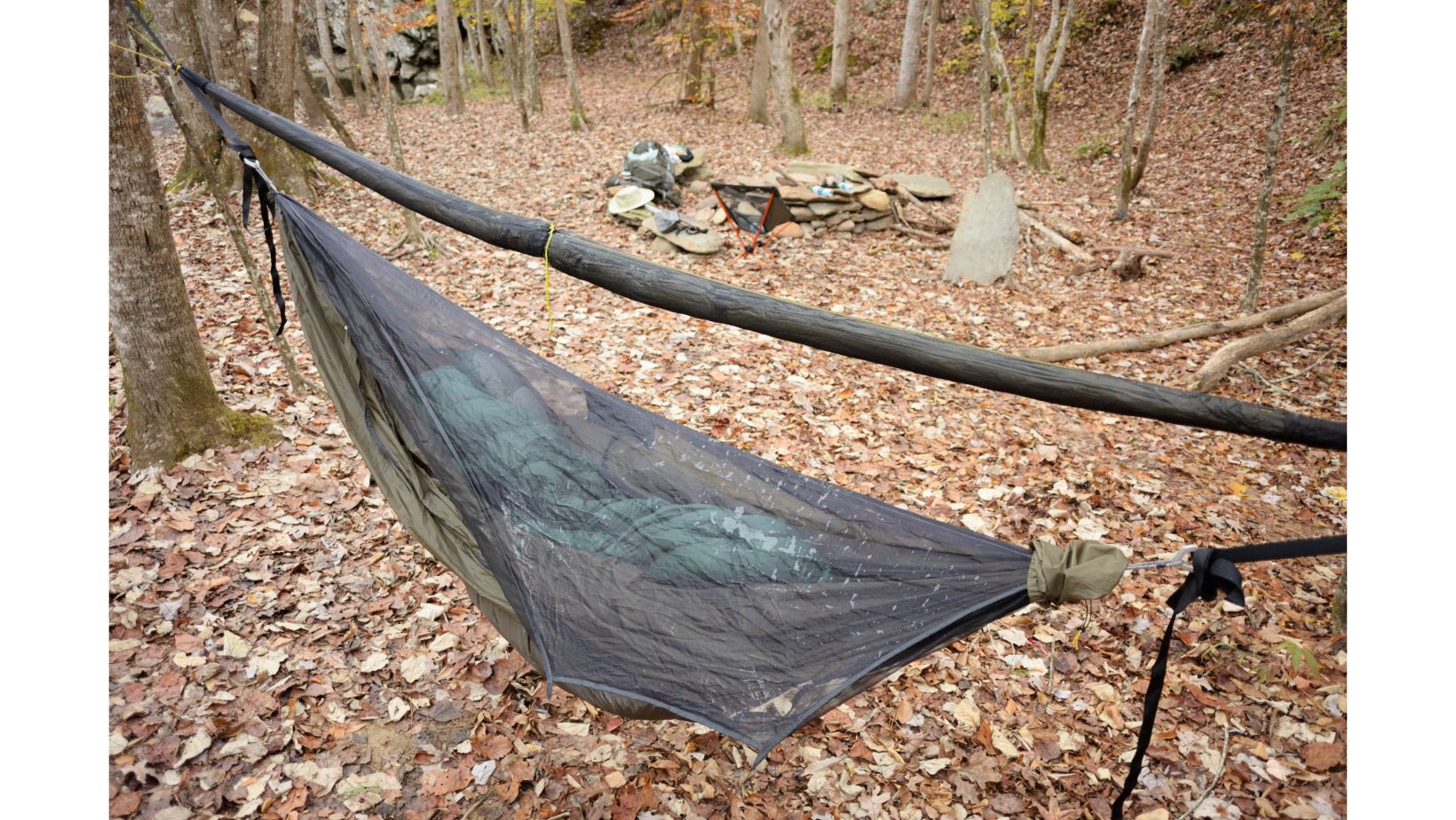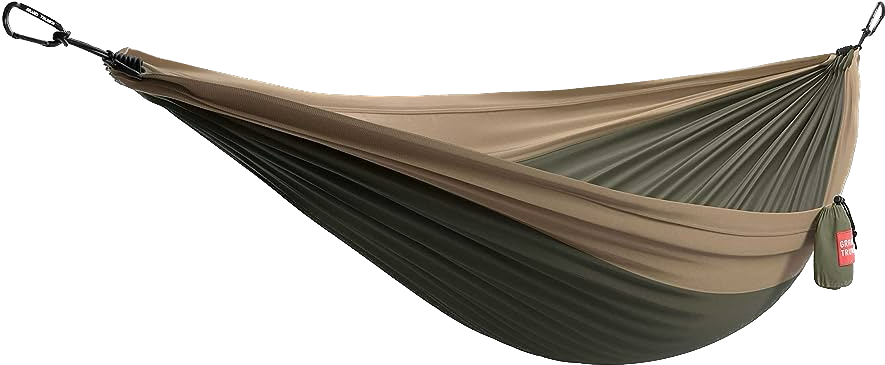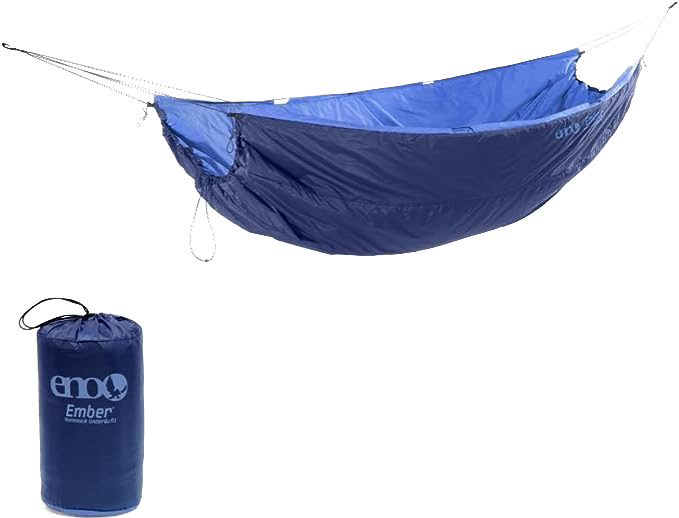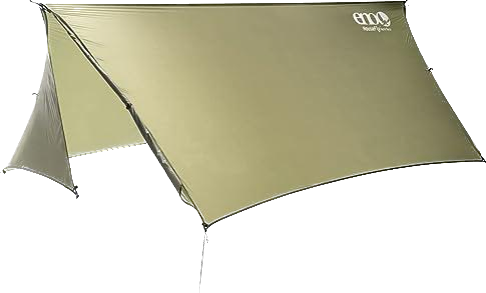Imagine enjoying a peaceful night’s sleep in the great outdoors, surrounded by nature, without the constant buzzing of mosquitoes and other pesky bugs disturbing your rest. This dream can become a reality with the help of a mosquito net hammock. In this comprehensive guide, we will answer the question: “Do I need a mosquito net hammock?” Further, we’ll walk you through everything you need to know about choosing the perfect mosquito net hammock for your next camping adventure,
Short Summary: Do I Need a Mosquito Net Hammock?
Mosquito net hammocks provide protection from bugs and pests and are critical in high mosquito prevalence areas. Because they are built into the hammock, they are easier to set up and better protect the hammock goer.
Why You Might Need a Mosquito Net Hammock

We’ve all experienced it – that annoying buzzing sound as mosquitoes and other tiny biting insects zero in on our exposed skin. Not only do these bug bites cause itchiness and discomfort, but they can also transmit diseases like malaria, dengue, and Zika virus. So, it’s no surprise that many outdoor enthusiasts turn to bug net hammocks to keep these pests at bay.
Hammock camping has become increasingly popular, thanks to the comfort and convenience it offers. However, a normal hammock can leave you exposed to the mercy of bugs. That’s where a hammock with a mosquito net comes in handy – it provides a safe, bug-free haven for a peaceful night’s sleep. I’ve personally experienced the difference a mosquito net hammock can make during our camping trips. No more waking up with dozens of mosquito bites or spending the night swatting away mosquitoes!
Mosquito net hammocks come in various styles and designs, from integrated bug netting to separate mosquito nets that can be hung over an existing hammock. Regardless of the style, a mosquito net hammock is an essential piece of camping gear that can drastically improve your outdoor experience. Say goodbye to being eaten alive by bugs and hello to a bite-free, enjoyable camping trip.
Types of Mosquito Net Hammocks

When it comes to mosquito net hammocks, there are several types to choose from, including a jungle hammock, parachute hammock, and camping hammock with integrated mosquito nets. A jungle hammock is designed for use in tropical environments and features built-in bug nets for protection against bugs. However, they can be quite expensive. A more budget-friendly option is a parachute hammock with a built-in mosquito net, which offers similar protection at a lower cost.
Most hammocks with mosquito nets come in a single size, but there are also double hammocks available with integrated bug nets for those who prefer more space or plan to share the hammock with a partner. These hammocks are made from durable materials like nylon or parachute nylon to withstand the elements and last for many adventures.
In addition to the integrated mosquito net, some hammocks feature a reversible design that allows you to flip the hammock upside down and use it without the mosquito net when bugs are not a concern. This versatility makes these hammocks an excellent choice for a wide range of outdoor activities.
Factors to Consider When Choosing a Bug Net Hammock

When selecting the perfect mosquito hammock, there are a few factors to consider. This includes the following:
- Material quality and durability
- Size and weight capacity
- Ease of setup and portability
In the following sections, we will dive deeper into each of these factors to help you make an informed decision.
Material Quality and Durability
Finding a durable hammock is at the top of our criteria, as it ensures that your investment will last for years to come. Most camping hammocks are made from parachute nylon or other breathable nylon fabrics, which are lightweight, but also durable. When assessing the quality and durability of a hammock, look for features like triple-stitched seams or reinforced tree straps, as these can be good indicators of a well-made product.
In addition to the hammock itself, look for quality mosquito netting. High-quality mesh fabric is vital for keeping bugs out while still allowing for adequate ventilation. Some mosquito net hammocks use “no-see-um” mesh, which is designed to keep out even the smallest biting insects like midges.
Weather and temperature differences are going to play a role in selecting a hammock and bug net as well. If you’re in a hot environment, you’re going to want something that is lightweight and breathable. Nylon hammocks or rope hammocks would be your ideal choice. This will help keep you cool and comfortable during those sweltering summer nights. On the other hand, if you plan to camp in colder weather, you may want to consider a hammock with an underquilt or a sleeping bag for added insulation.
Size and Weight Capacity
Size and weight capacity are important factors to consider when selecting a hammock, as they determine the level of comfort and safety you can expect. Most hammocks have a weight capacity of around 500 pounds, but some models can support up to 600 pounds or more. I recommend getting one with a heavier weight rating so that you can safely accommodate your weight and any additional gear you may wish to store in the hammock. Additionally, be sure to get hammock straps that will match the weight rating of your hammock.
In terms of size, most mosquito net hammocks are designed for single-person use. However, there are double hammocks available with integrated bug nets for those who prefer more space or plan to share the hammock with a partner. When choosing the right size for your needs, consider factors like your height, sleeping habits, and the amount of gear you plan to store in the hammock.
Lastly, if you’re planning on backpacking or traveling, you’ll want a backpacking hammock with mosquito net. They are compact and the lightweight design will be crucial for easy moving around. While hammocks will certainly be smaller and lighter than a tent, there are some variations in weight. I would look for hammocks that come with a stuff sack or carry bag for convenient storage and portability.
Ease of Setup and Portability
Ease of setup is where hammocks really shine, especially for those who frequently travel or camp. Setting up a hammock is fairly straightforward, but can also include several accessories or add-ons. These range from integrated mosquito nets to separate nets that can be hung over the hammock. Some models even allow you to flip the hammock upside down and use it without the mosquito net when bugs are not a concern.
When setting up a hammock with a mosquito net, it’s important to ensure that the straps are properly secured and angled at around 30° toward the tree. The lowest point of the hammock should be no more than 18 inches off the ground. If your hammock comes with a separate mosquito net, make sure it’s hung securely and snugly over the hammock to keep bugs out effectively.
In terms of portability, look for a mosquito net hammock that packs down small and is lightweight for easy transport during your camping trips or backpacking adventures. Some models come with a stuff sack or carry bag for convenient storage and transport.
How to Properly Set Up and Maintain Your Mosquito Net Hammock

Properly setting up your mosquito net can be a challenge to figure out but is essential for a comfortable and bug-free hammocking experience. In the following sections, we will provide detailed guidance on how to set up your hammock, hang your mosquito net, and care for your hammock to ensure it lasts for many adventures to come.
Setting Up Your Hammock

Setting up your hammock begins with finding the perfect spot to hang it. Look for two sturdy trees that are approximately 12 to 15 feet apart and free from any obstacles or hazards. Attach the tree straps to the trees, making sure they are secure and at the correct angle (approximately 30°) for optimal comfort and safety. Be sure to choose a location that is clear of clutter, free from puddles, and away from any sources of light that may attract bugs. This will help to minimize mosquito activity around your sleeping area.
Next, connect the hammock to the tree straps using climbing-grade carabiners, ensuring that the lowest point of the hammock is no more than 18 inches off the ground. This height will provide a comfortable sleeping position while still allowing for easy entry and exit.
If your hammock comes with a separate mosquito net, hang the bug net securely over the hammock using rope, clips, or any other suitable attachment method. Make sure the mosquito net is snug and covers the entire hammock to effectively keep bugs out.
Setting up your Mosquito Net Properly

Once your hammock is in place, it’s time to focus on setting up your mosquito net properly. Construct a frame for your mosquito net – usually, bug nets come with a framing system but if yours doesn’t, try using materials such as PVC pipes, rope, or even sticks. The frame should be sturdy enough to support the weight of the net and maintain its shape throughout the night. Attach the mosquito net to the frame or hooks using rope, clips, or any other suitable method, ensuring that it is secure and snug.
Check for any slack spots in the mosquito net and tighten as needed to ensure a snug fit. This will help to keep bugs out while still providing adequate ventilation for a comfortable night’s sleep.
Hammock Maintenance and Care
Regularly checking and caring for your hammock and net is crucial for keeping mosquitoes out of your hammock for years to come. Clean your hammock regularly, either by hand or in a washing machine on a gentle cycle. Be sure to use a mild detergent and avoid using bleach or fabric softeners, as these can damage the hammock’s material.
Inspect your hammock and net frequently for any signs of damage, such as fraying, tears, or broken hardware. Address any issues promptly to prevent further damage and ensure your safety while using the hammock. If your hammock comes with a stuff sack or carry bag, use it to store the hammock when not in use. This will help to protect it from dirt, moisture, and UV damage. Mosquito netting with a hole in it will obviously let bugs in and will either need to be patched or completely replaced.
By following these simple maintenance and care tips, you can keep your mosquito net hammock looking and performing its best for years to come.
Alternatives to Mosquito Net Hammocks
While mosquito net hammocks are an excellent solution for bug protection during outdoor activities, there are other alternatives available for those who prefer different options. Try these other solutions if you want alternatives to bug nets or mosquito hammocks:
- Tents and tarps can provide shelter and protection from bugs, and they may be more suitable for those who prefer a more traditional form of camping or require extra space and privacy.
- Bug repellents, such as sprays, lotions, and even permethrin-treated clothing, can also be an effective way to keep mosquitoes and other insects at bay.
- Permethrin is a synthetic molecule that repels and kills bugs when they come into contact with it, offering spatial repellency that prevents insects from landing on treated surfaces. This can be a useful alternative or supplement to a mosquito net hammock for those who prefer to use a regular hammock or sleep on the ground.
Ultimately, the choice between a mosquito net hammock and other alternatives will depend on your personal preferences, needs, and the specific environment in which you plan to camp or travel. By exploring the various options available, you can find the best solution for a comfortable, bug-free outdoor experience. If you want to learn more, check out our article on how to hammock without mosquitoes.
Summary
In conclusion, mosquito net hammocks are an effective and comfortable solution for keeping bugs at bay during your outdoor adventures. By considering material quality and durability, size and weight capacity, ease of setup, and portability, you can find the perfect hammock to suit your needs.
By properly setting up and maintaining your mosquito net hammock, you can enjoy a peaceful, bug-free night’s sleep in the great outdoors. So go ahead and explore the world of mosquito net hammocks – your camping experience will never be the same again!
Frequently Asked Questions
Should I get a hammock with a mosquito net?
It’s a great idea to get a hammock with a mosquito net. Not only will you have the ultimate relaxation experience without pesky bugs, but you’ll be able to camp in confidence as well.
Plus, you’ll be well protected from mosquitos and other flying insects. So go ahead and invest in one – you won’t regret it!
Is a bug net necessary for hammock camping?
If you plan on hammock camping in warmer, lower-altitude climates, I highly recommended that you bring a bug net with you. Even if you’re heading to colder, higher-altitude areas, having a bug net with you is always a smart idea.
Do I need a mosquito net?
Yes, you should consider getting a mosquito net to protect yourself and your family from getting bit by mosquitoes that can potentially carry diseases. Mosquito nets can be used both indoors and outdoors, and they provide effective protection against insect-borne illnesses.
Can mosquitoes bite through mosquito nets?
Mosquito nets offer a great layer of protection against mosquitoes, but they are not invincible. Mosquitoes may be able to pierce the fabric with their proboscis and bite through the net, so it’s important to use other preventative methods in addition to a net.



 Hello there, we're Vira Outdoors!
Hello there, we're Vira Outdoors!

